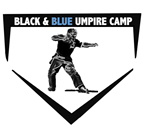| Home |
| Ball Stays in Infield |
| Fly Ball to Outfield |
| Batted Ball to Outfield |
| Everything Else |
| PreGame Guide |
| Study Guide |
| Resources and Links |
Site Maintained by: DataBase Management Services |
| Introduction | This is the meat and potatoes of baseball three-umpire mechanics. When a batted ball leaves the infield umpires will:
Depending on the location of the runners at the time of pitch. Understanding the two-umpire mechanic concepts when the plate umpire covers third and when the plate umpire stays home will make the rotations, reverse rotations, and staying puts of three-umpire mechanics easier to remember. In these situations we can "box 'em in". With a third umpire often allows umpires the luxury of having one umpire in front of a runner and one umpire behind a runner - but not always! |
|---|---|
| Rotate | Just like 2-umpire mechanics the Plate umpire will cover initial plays at third base on a batted ball to the outfield when, at time of pitch:
In 3-umpire mechanics the plate umpire will rotate and COMMIT to third base in the 2-umpire situations above and when, at time of pitch:
Example
Runner on 1st base only. Base hit to the outfield. Plate umpire rotates to 3rd base and commits. Because the runner that started on 1st base did not go to 3rd base the 1st base umpire moves to the home plate side of 1st base and stays at 1st base with the batter runner while the 3rd base umpire stays will the runner at 2nd base. Coverage and Movement of the Umpires When Rotating on a Batted Ball to the Outfield: Plate Umpire:
1st Base Umpire:
3rd Base Umpire:
Examples
Full rotation of base umpires with a play at 3rd base covered by plate umpire.
|
| Reverse Rotate (Slide) |
The two base umpires will reverse-rotate (slide) and cover the bases accordingly on a batted ball that leaves the infield when, based on runner locations at time of pitch:
Plate umpire has to stay at home, 1st base umpire is at 1st and 3rd base umpire is inside, when, at time of pitch:
Coverage and Movement of the Umpires when Reverse-Rotating (sliding) on a batted ball to the outfield: Plate Umpire:
1st Base Umpire:
3rd Base Umpire:
The reason some umpires call it the slide is the 1st base umpire "slides" inside the diamond pushing the 3rd base umpire over to the 2nd/3rd base working area. Example
Notice the 1st Base Umpire "slides" into the inside of the diamond taking the batter-runner into 2nd. The 3rd base umpire takes runners in to 3rd base. |
| Staying Put | The base umpires will not rotate but will "stay put" when, based on runner locations at time of pitch:
Plate umpire has to stay at home, 1st base umpire is inside and 3rd base umpire is at 3rd base, when, at time of pitch:
Coverage and Movement of the Umpires when to STAY PUT on a batted ball to the outfield: Plate Umpire:
1st Base Umpire:
3rd Base Umpire:
Examples
Runner on 2nd base only. Base hit to Right Center. Notice movement of 3rd base umpire to watch the runner on 2nd touch 3rd base. Also notice 1st base umpire moving over to cover batter-runner at first base. 3rd base umpire moves in too early, however in advance mechanics this is ok and now we have two umpires boxing in the one runner. Runner on 2nd base only and base hit to Left for a double. Notice movement of 3rd base umpire to watch runner on 2nd touch 3rd. Also notice movement of 1st base umpire, initially he's covering the fly ball but once it is not caught he turns to pick up battter-runner coming into 2nd base. The plate umpire in this situation will watch the batter-runner touch 1st base from the plate (yes 90 feet away). |
| Top of Page | |
